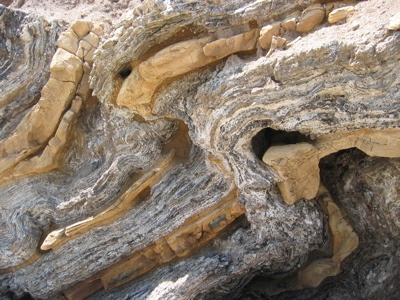Sedimentology and Diagenesis of the Miocene Monterey Formation of Coastal California

The Monterey Formation of California is part of a famous band of uniquely biogenic sediments deposited around the Pacific Rim between about 17 and 6 million years ago. Deposited beneath an organic-carbon-rich oceanic upwelling system, with diagenesis, these sediments are the source and reservoir of much of the oil found in California. The highly biogenic sediments are prone to alteration with burial. Changes in the physical character of the rocks (diatomite, chert, dolomite, phosphate, etc.) are key controls of oil migration and formation of petroleum reservoirs. We are researching locations in both central and southern California.
In Santa Barbara County, we are conducting a geochemical and petrographic study of the development of ribbon bedded and nodular chert across the opal-A to opal-CT transition at Mussel Rock. This study has discovered that the silica phase transition corresponds with considerable chemical mobility of other elements, suggesting the simultaneous involvement of clay mineral diagenesis.
In the Palos Verdes Peninsula (Los Angeles County), we have used the diagenetic grade of silica phases to document the maximum burial and rates of uplift of the growing anticlinal structure. In the San Joaquin Hills of Orange County, we have documented the lithology, facies, and diagenesis of the Monterey Formation while creating educational materials for Crystal Cove State Park and the Laguna Coast Wilderness Park.
Website: MARS (Monterey And Related Sedimentary rocks)





